Gyeongju Travel Resources
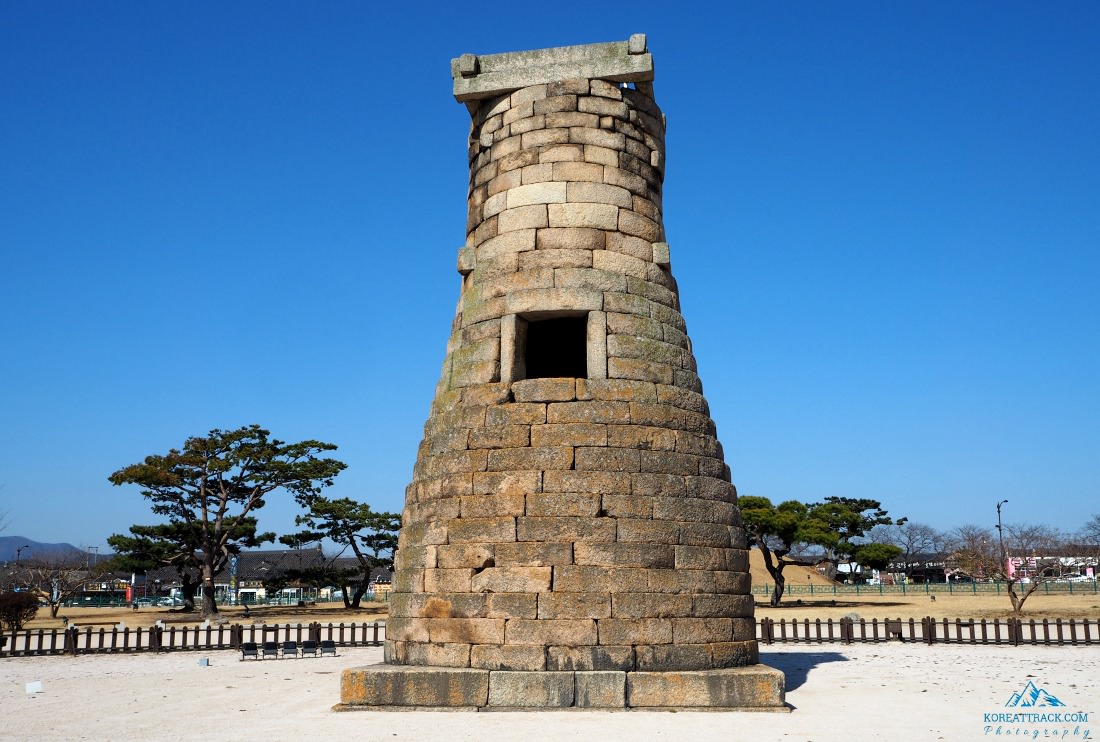 Cheomseongdae - Astronomical Stone Observatory Platform
Cheomseongdae - Astronomical Stone Observatory Platformgyeongju travel resources
Gyeongju Travel Resources is a living guide for travelers seeking information about this very historical region. It will be updated regularly.
Gyeongju is a coastal city in the North Gyeongsang Province in South Korea. First of all, it is known to be the center of the Silla Kingdom, one of Korea’s prominent three kingdoms (Baekje, Goguryeo, and Silla or Shilla).
In 668 AD, Gyeongju became prosperous, and the news of the kingdom’s prosperity spread worldwide even reaching as far as Persia (The Book of Roads and Kingdoms).
During the Silla period, Gyeongju City was called ‘Seorabeol.’ Then later on the city was changed to Gyeongju by King Taejo in 940. Gyeongju becane the Eastern Capital in 987.
However, the kingdom fell, and the Goryeo Dynasty (935-1392) rose to power. Still, Gyeongju remained the center in the region.
Despite the destructions and invasions suffered by Gyeongju, it started to regain its status and become one of the famous travel destinations in the country. Resources were used for excavations, restorations, and renovation activities.
The historical labor bore much fruits. Gyeongju is now known for its historical relics and sites left mostly from the Silla period.
As the country become economically secure, South Korea has been improving its tourism sites and facilities. Among many historical areas, Gyeongju is one of the most traveled destinations in the country.
This page offers the historical, natural, modern facilities, and more fun travel destinations in Gyeongju. Check out the main attractions below.
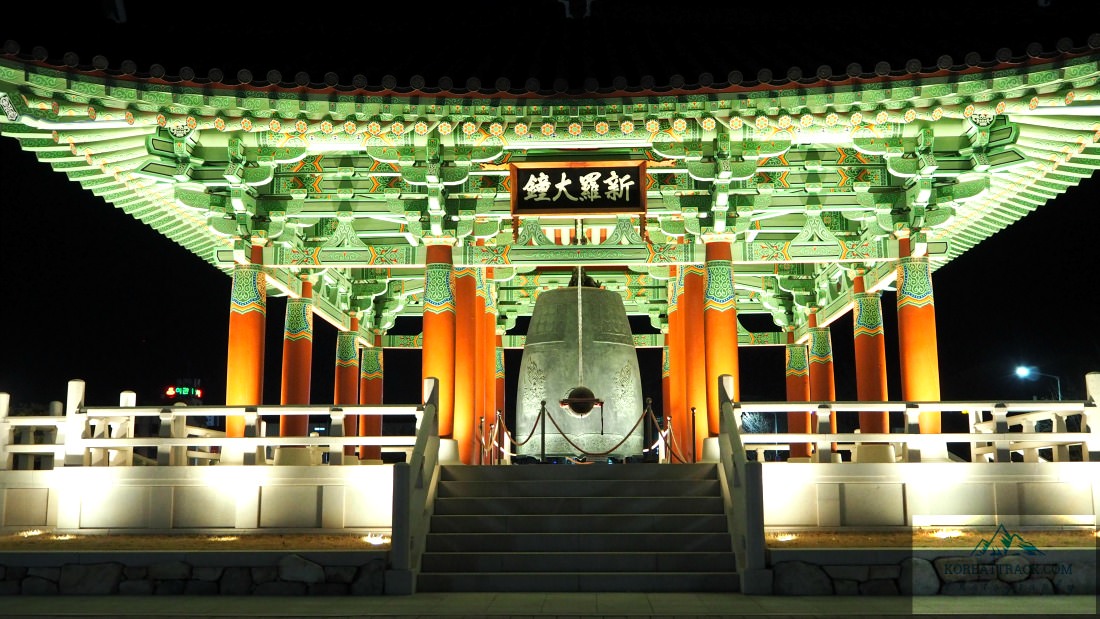 The Great Bell of Silla, Gyeongju City, Gyeongsangbuk-do
The Great Bell of Silla, Gyeongju City, Gyeongsangbuk-doGyeongju Travel Resources & Destinations
Basically, Gyeongju’s tourist destinations and attractions fall into four broad categories. I don’t know if this is how the Gyeongju government has categorized it, but it is how I see it anyway.
- Gyeongju Daereoungwon Ancient Tomb Complex
- Gyeongju Namsan Region
- Bomun Tourist Complex
- Other travel areas
Gyeongju Daereoungwon Ancient Tomb Complex
The following sights and attractions are located within and around Gyeongju City proper. I was surprised myself when I went out that evening I arrived and discovered that the ancient tombs are just a few meters from my hotel…
Ancient Tombs in Noseo-ri, Gyeongju’, Geumgwanchong Tomb, Bongwhangdae Pavilion, The Great Bell of Shilla, Ancient Tombs in Nodong-ri, Gyeongju; Tomb of General Kim Yu-sin, Tomb of King Muyeol, Cheonmachong Ancient Tomb, Hwangnamadechong Tomb, Daereungwon Ancient Tombs;
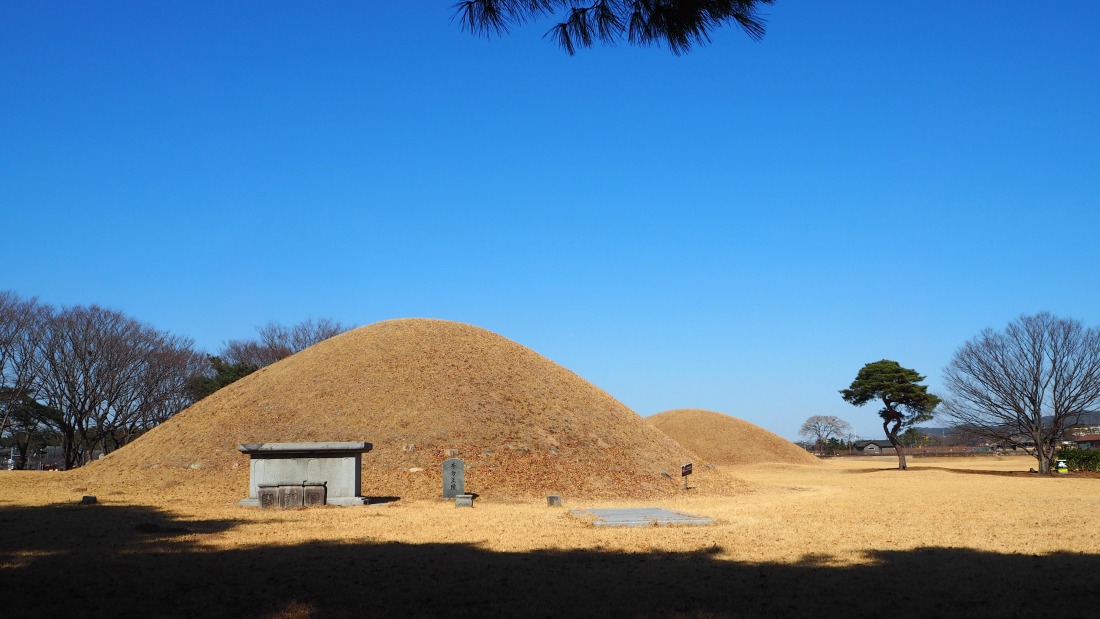 Tomb of King Naemul
Tomb of King NaemulTomb of King Michu, Jjoksaem Historic Museum, Hwangori Ancient Tombs, Silla Ancient Tombs (undergoing excavation, restoration), Cheomseongdae Observatory, Historical Area in Eastern Gyeongju, Tomb of King Naemul, Gyerim Forest, Gyeongjuhyanggyo Confucian School
Choe’s Old House in Gyeongju, Gyochon Hanok Village, Woljeonggyo Bridge, Wolseong Fortress, Sacred Bell of Great King Seongdeok, Gyeongju National Museum, Silla History Gallery, Wolji Gallery, Three-Story Stone Pagoda at Goseonsa Temple Site, Donggung Palace and Wolji Pond
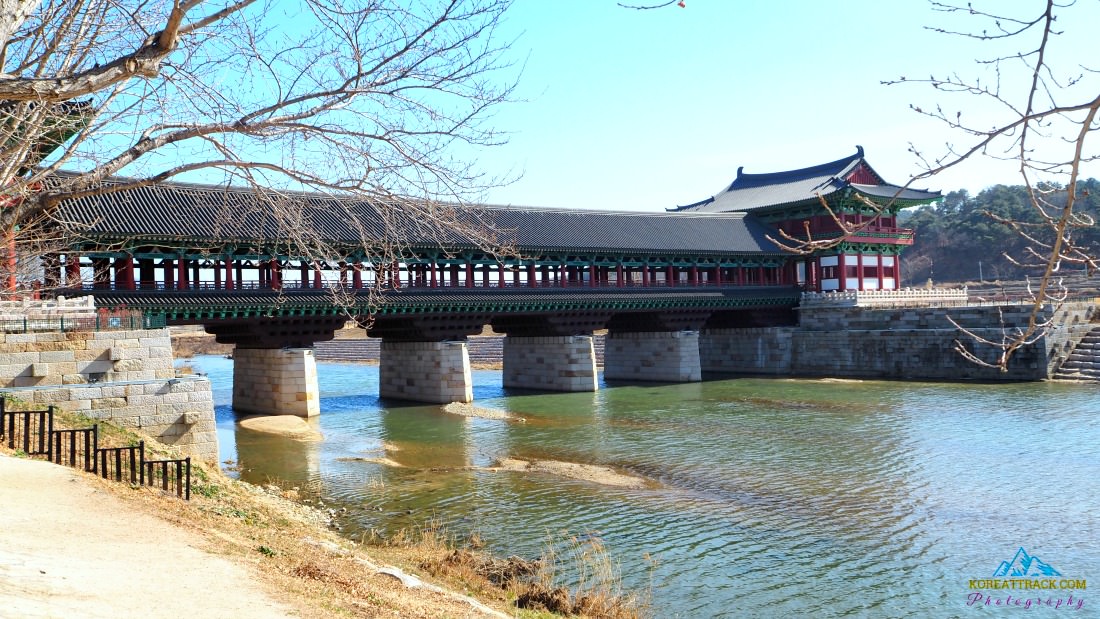 Woljeonggyo Bridge, Gyeongju-si, Gyeongsangbukdo
Woljeonggyo Bridge, Gyeongju-si, GyeongsangbukdoThe second category is also exciting. Although sites and sights are more spread out but within and around the mountain--Namsan Mountain.
For this category, you might have to do some hiking especially if you want to see the granite-carved images and statues of Buddha and Bodhisattvas in the mountains.
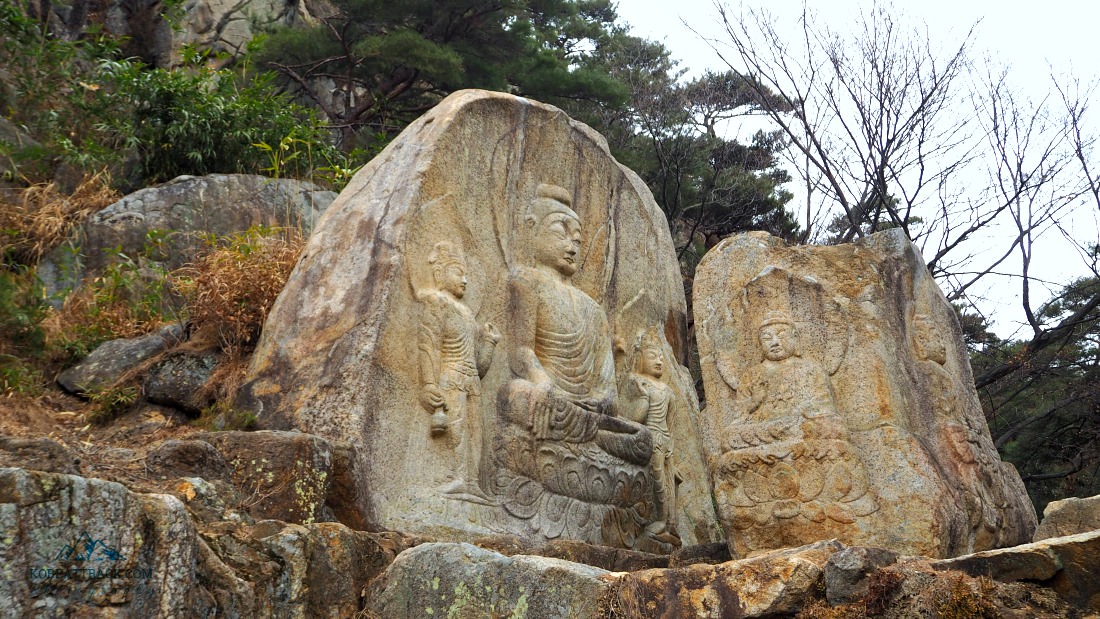 Carved-stone images of Buddha at Chilburam Temple Site, Gyeongju
Carved-stone images of Buddha at Chilburam Temple Site, GyeongjuGyeongju Namsan Region
Namsan Mountain range extends from the heart of Gyeongju to the southern part toward the sea. This mountain range is filled with Silla period relics including temples, stone-carved Buddha sculptures, stone pagodas, tombs of kings and royals, and more exciting features.
Here are most of them…
Tomb of King Hyogong, Tomb of King Sinmun, Tomb of King Sinmu, Flagpole Support at Mangdeoksa Temple Site, Sacheonwangsa Temple Site, Tomb of Queen Seondeok
*Dongnamsan Mountain Direction sites
Rock-carved Seated Buddha in Bulgok Valley, Jangchangji (Storehouse Site), Okryongam Hermitage, Rock-carved Buddhas in Tapgok Valley, Sonte Seated Buddha in Mireukgol Valley Namsan, Borisa Temple, Seated Buddha image carved on the rock surface, Haemokryeong Mineral Spring, Namsanseong Fortress, Hwarangabawi Rock, Hwarang Training Center,
Tomb of King Heongang, Tomb of King Jeonggang, Gokkalbawi Rock, Tongiljeon, Three-story Pagoda at Goksagok, Seochulji Pond, Three-story Stone Pagoda, Seated Stone Buddha Statue at Osangol Valley, East and West Three-Story Stone Pagodas in Namsan-dong
Yeombulsa Temple Site, Seungsogolsa Temple Site, Cheongdongtap Pagoda, Sinseonam Heritage, Chilburam Heritage, Seated Stone Buddha at Saegatgol Valley, Stone Brick Pagoda, Gowisan Mountain, Rock-carved Buddhas in Yeoramgok
*Gyeongju Namsan Region Seonamsan (Samneung Direction)
Gyeongju National Museum, Sangseojang, General Kim Ho’s Historic House, Yangsanjae Shrine, Najeong Well, Wolamjae Shrine, Flagpole Support at Namgansa Temple Site, Tomb of King Ilseong, Three-Story Pagoda at Changnimsa Temple Site
Tomb of King Jima in Gyeongju, Poseokjeong Pavilion Site, Seated Buddha image carved on rock surface at Yuneulgok Valley, Taejinji Pond, Sambulsa Temple, Mangwolsa Temple, Stone Standing Buddha Triad in Bade-dong, Namsan Information Center, Tomb of King Gyeongae
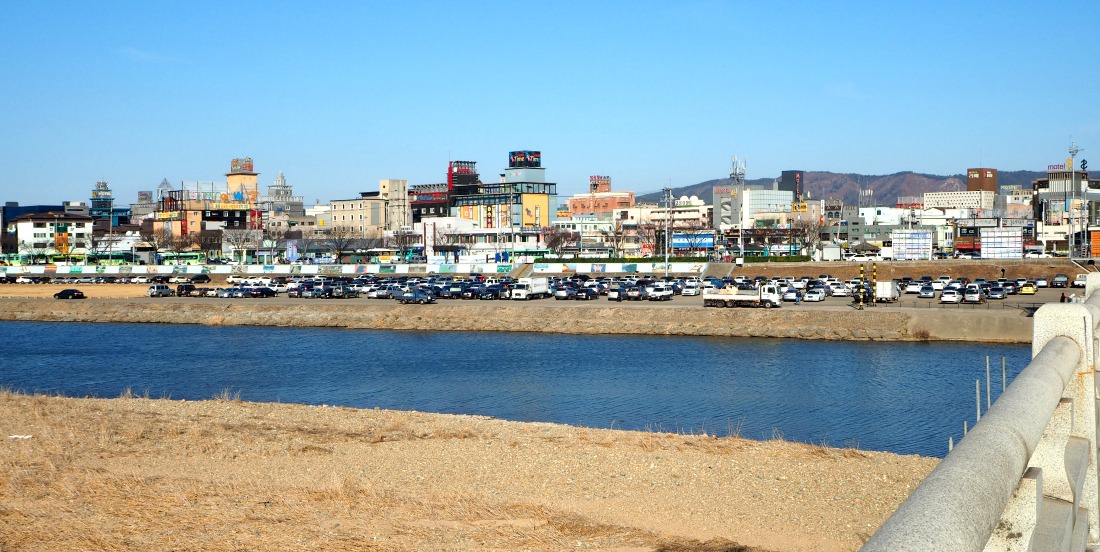 Gyeongju City
Gyeongju CityHamwolsa Temple, Ipgok Stone Buddha’s head in Namsan, Geumosa Temple, Satgatbong Peak, Seated Stone Buddha, Yukjonbul Carved on Rock Surface, Gwaneumbosal Image Carved on Rock Surface, Seated Yeorae Image Carved on Rock Surface in Samneung Valley,
Buheungsa Temple, Five-Story Stone Pagoda in Neumbibong Peak, Rock Carved Lines of Buddha, Badukbawi Rock, Sangseonam Rock, Geumojeong Pavilion (observatory), Seated Seokgayorae Image carved on Rock Surface, Sangawbawi Rock, Namsan Buseok Rock,
Geumobong Peak, Yongjangsa Temple Site, Three story stone pagoda at Jamneunggol Valley Seated Stone Pagoda, Relief of Buddha in Yaksugye Valley, Seokgasa Temple Site, Stone Seated Bhaisajyaguru Buddha at Geolgol valley,
Cheonusa Temple, Seated Rock-Carved Buddha, Three Story Stone Pagoda, Stone Seated Buddha in Yongjangsagok Valley, Gwaneumsa Temple, Waryongsa Temple, Taebong Peak Eunjeokam Hermitage Site, Cheollyongsa Temple Site, Three-Stone Pagoda at Cheollyongsa Temple Site
Compared with those exciting historical categories, the third one is more on modern attractions and entertainments.
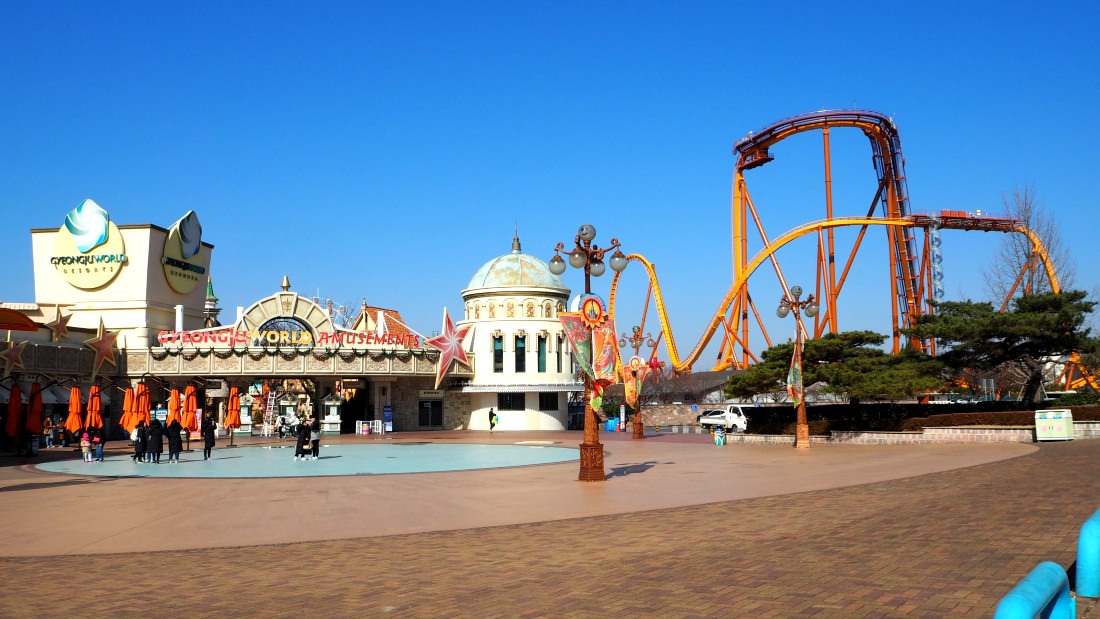 Gyeongju World - Bomun Tourist Complex, Gyeongju Travel Resources
Gyeongju World - Bomun Tourist Complex, Gyeongju Travel ResourcesBomun Tourist Complex
Compared to the above two tourism destinations as historical resources, the following items are more on entertainments and nothing to do with historicity.
It is more of a modern form of entertainment--something that are adrenaline pumping and entertaining travel facilities and destinations.
Check it out…
- Gyeongju World (Phone: 054-745-7711)
- California Beach (054-745-7711)
- Blue One Water Park (054-778-9000)
- Silla Millennium Park (054-778-2000)
- Gyeongju Healing Theme Park (054-777-6508)
- Teddy Beach Museum (054-742-7400)
- Toy Village (054-772-9000)
- Old Memory Shanty Town (054-748-5002)
- KPOP Museum (054-776-5502)
- Gyeongju World Automobile Museum (054-742-8900)
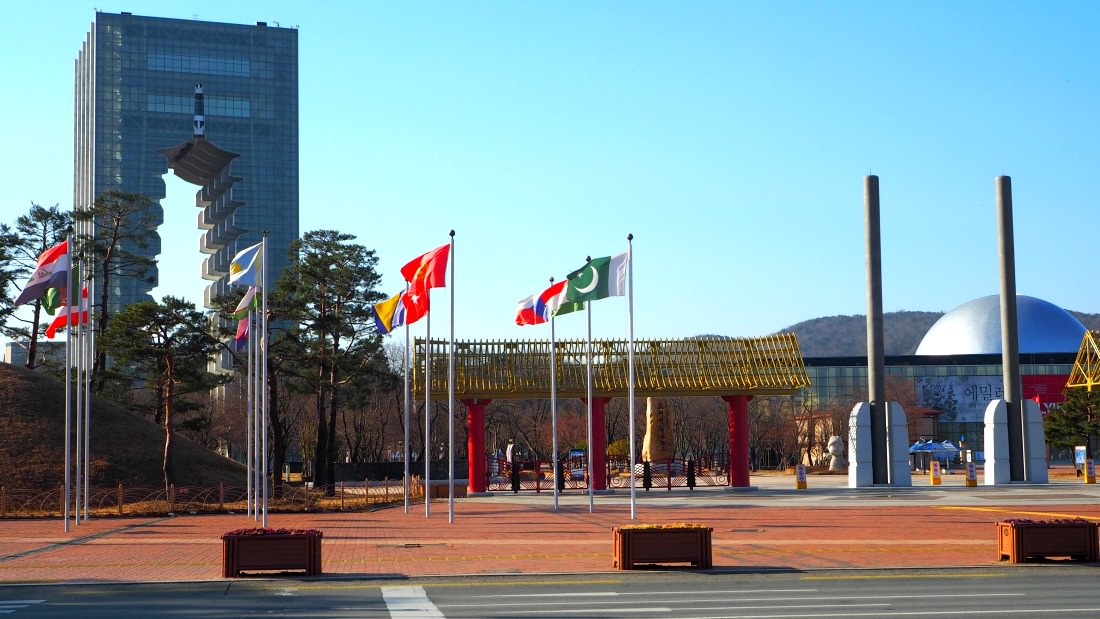 EXPO Building, Bomun
EXPO Building, BomunHwangyongwon, Gyeongju HICO (Convention Center), Bomunjeong Pavilion, Bomuntap Pagoda, Gyeongju Bomun Shooting range, Shilla Country Club, Gyeong Sport for All Park, Kensington Resort, Bukgun Food Area, Gyeongju East Palace Garden, Myeonghwalsanseong
Fortress, Supmeori Food Area, Bomunho Lake, Jeongtoam Hermitage, Cheongamjeong Pavilion, Gyeongju Kidult Museum, Gyeongju Country Club, East and West Three-Story Pagodas in Cheongun-dong, Gyeongju World Culture Expo Park, Baekgyeol Performance Stage, Blue One Water park, Blue One Resort, Blue One Bomun C.C
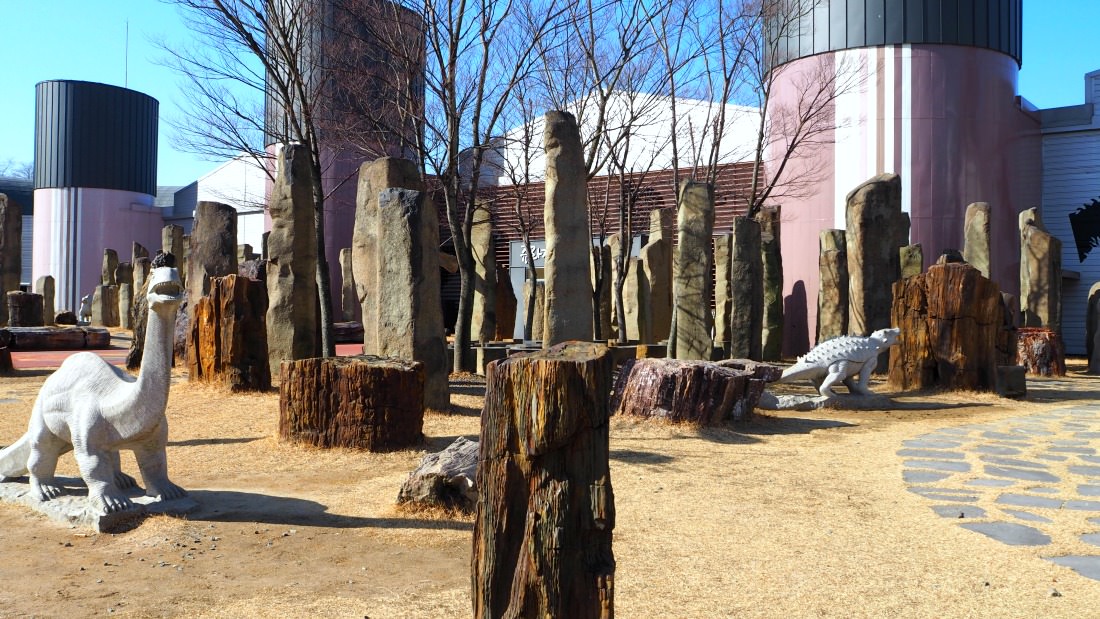 Fossil Park, Gyeongju EXPO (1998)
Fossil Park, Gyeongju EXPO (1998)nearby Accommodation and Hotels
Compared to Gyeongju City Proper area, Bomun is known for its more prominent and international hotels. I stayed here for my second hotel on my second night.
Here are the accommodations you can choose from in the area. They are all surrounding the Bomun Tourist Complex.
- Traditional Hanok Hotel Lagung
- The K-Hotel Gyeongju
- Benikea Swiss Rosen Hotel Gyeongju
- Commodore Hotel Gyeongju
- Hotel Concorde
- Daemyung Resort
- Chosun Spa Hotel
- Gyeongju Tourism Hotel
- Ilseong Bomun Condominium
- Hyundai Hotel
- The Suites Hotel Gyeongju
- Hanhwa Resorts
- Kensington Resort
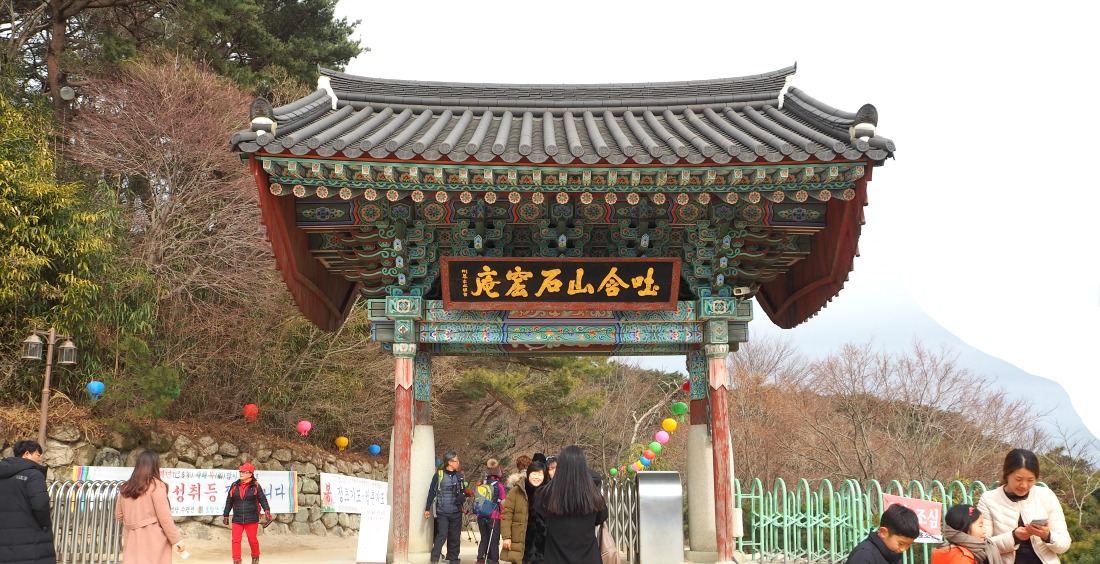 Entrance Gate at Seokguram Grotto, Gyeongju
Entrance Gate at Seokguram Grotto, GyeongjuMore Gyeongju Travel Resources
Aside from the three major travel destinations and resources mentioned above, you can also move along the sea areas. This area also has historical sites, but you can see more beaches and resorts than relics.
Below are your travel resources…
Gyeongju Haeparang Trail (Donghae)
East And West Three-Story Stone Pagodas at Gameunsa Temple Site
Igyeondae Height, Boggil Daewangam Beach, Tomb of King Munmun (Great King Rocks), KORADIUM (Visitor Center), Wolseong Nuclear Power Plant, Remains of King Seok Talhae’s Birth,
Eupcheon Mural Village, Columnar Joint Zone of Yangnam in Gyeongju, Gwanseong Beach and Seawater Pool, J’s Country Club Seaside, Najeong Soft Sand Beach, Jeonchon Beach & Seawater Pool, Gampo Beach, Campohang Port, Oryu Goara Beach, Oryu Camping Site, Yeon-dong Fishing Village
For sure, that’s quite different from those places located only within the land.
traveling to Gyeongju
One can easily get to Gyeongju. That also entirely depends on your plans, resources, point of origins, and preferences of transports.
Here are the flights available from various departure areas…
- Incheon International Airport Phone: 1577-2600
- Gimpo International Airport Phone: 1661-2626
- Gimhae International Airport, Phone: 1661-2626
- Daegu International Airport, Phone: 1661-2626
- Ulsan Airport, Phone: 1661-2626
- Pohang Airport, Phone: 1661-2626
Also, you can take a train or bus from anywhere in South Korea and get to Gyeongju, maybe a little shorter than flying in…
- KTX (Korean Train) Connection Downtown Buses
- City Shuttle: Numbers: 50, 51, 60, 61, 70
- Express Bus (Gyeongju: 054-741-4000)
- Intercity Bus (Gyeongju: 1666-5599)
Gyeongju Tour Programs
The following programs should be reserved or registered ahead to ensure that you can participate in your chosen interest.
- Gyeongju Healing Theme Park (1899-1165)
- Shilla Moonlight Tour (054-774-1950)
- Namsan Moonlight Tour (054-777-7142)
- Exploration of Namsan Ruins (054-777-7142)
- Ceramic Making Experience (054-746-7270)
- Oriental Medicine Experience (054-775-6600)
- Gyeongjuhyanggyo Confucian School Stay (054-775-3624)
- Korean Traditional Royal Cuisine Experience (054)-748-2507)
- Traditional Cultural Experience (054-762-2633)
- Gyeongju Bicycle Tour (054-748-8842)
- Temple Stay Programme (Homepage: Kirimsa Temple, Golgulsa Temple, Bulguksa Temple)
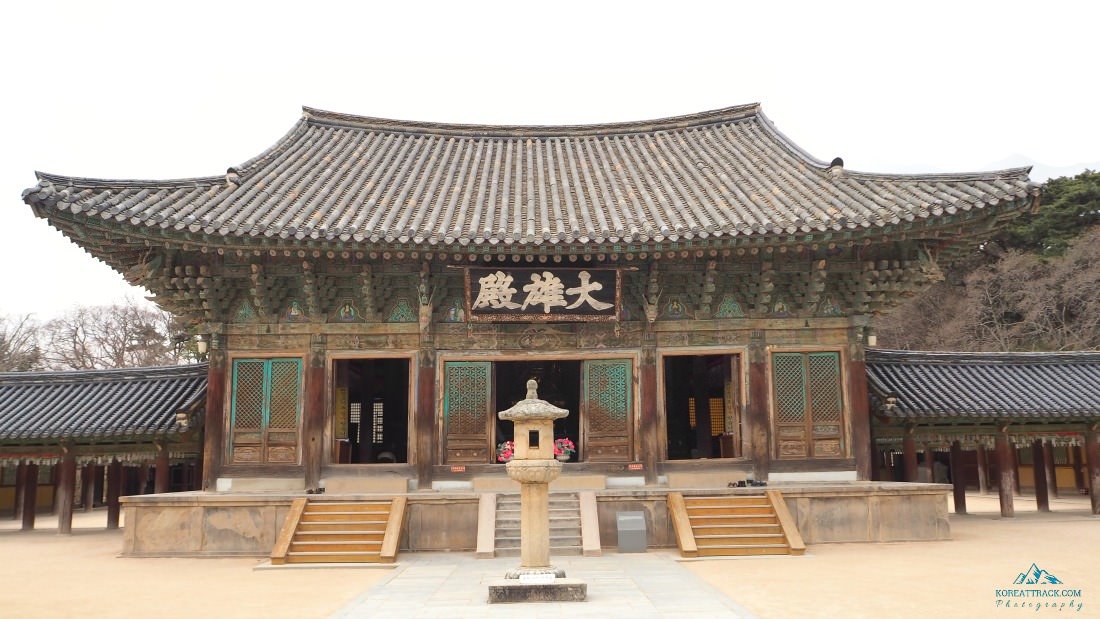 Bulguksa Temple (Daeungjeon Hall)
Bulguksa Temple (Daeungjeon Hall)*Night City Tour
Donggung and Wolji (Anapji)-->Cheomseongdae Astronomical Observatory-->Gyerim-->Naemul King Grave-->Gyochon Village-->Woljeonggyo Bridge
Rate: Adult (16,000), Child (14,000)
Notices:
Subject to change or cancellation
Canceled if less than 10 guests
Can get off at Bomun Lake or Bus Terminal after the tour
Thanks for visiting and reading through the article. I hope this Gyeongju Travel Resources article helps your search.
Enjoy your travels!
- Home
- Hotels & Travel Guides
- Gyeongju Travel Resources
Get Exciting Activities
Book one of our exciting activities today to experience the thrill of a lifetime! Take advantage of this opportunity and secure your spot in advance.
Hotel Map Guide
Find your affordable, accessible, and comfortable hotel in Seoul at Agoda.Com. See the hotel map below...
Hotel Booking Guide
Find affordable and amazing hotels on Agoda.com using the search box below. Book now to enjoy great discounts and save!
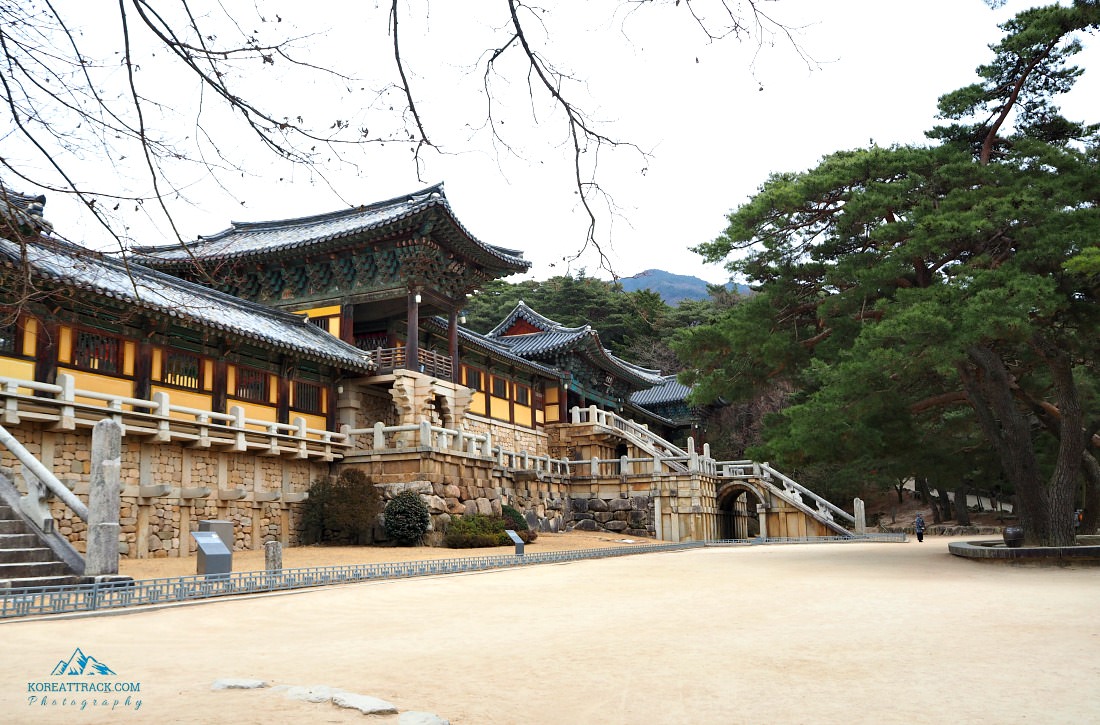


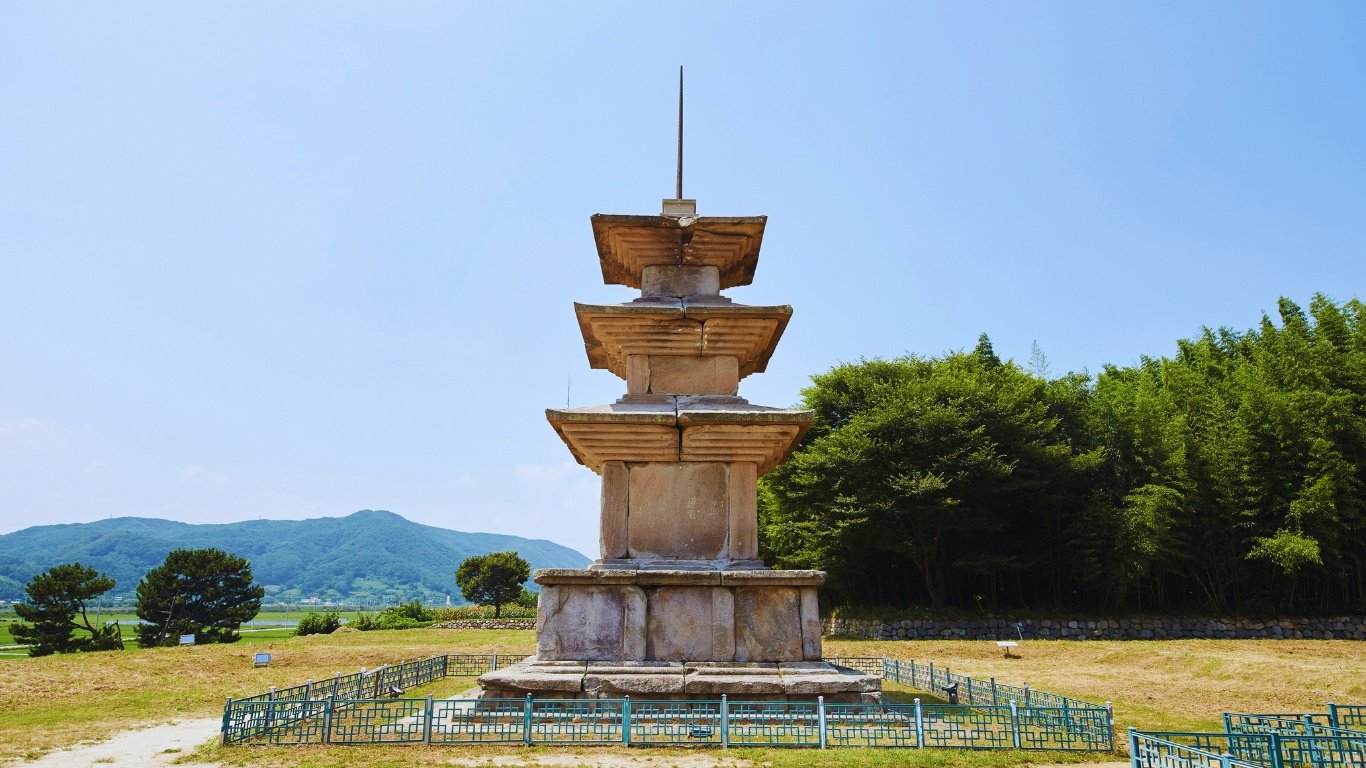






New! Comments
What do you think about this page? Leave me a comment in the box below.